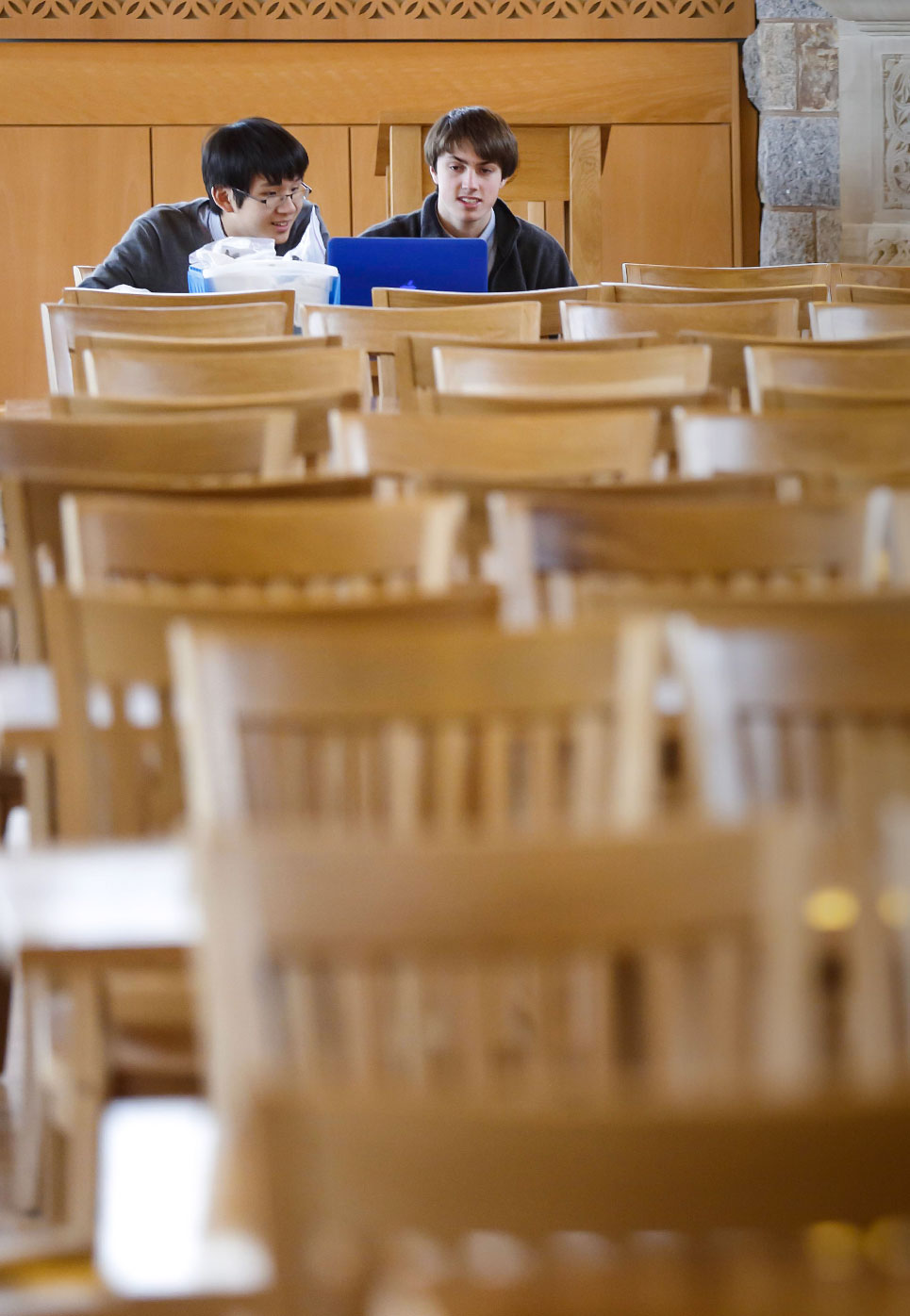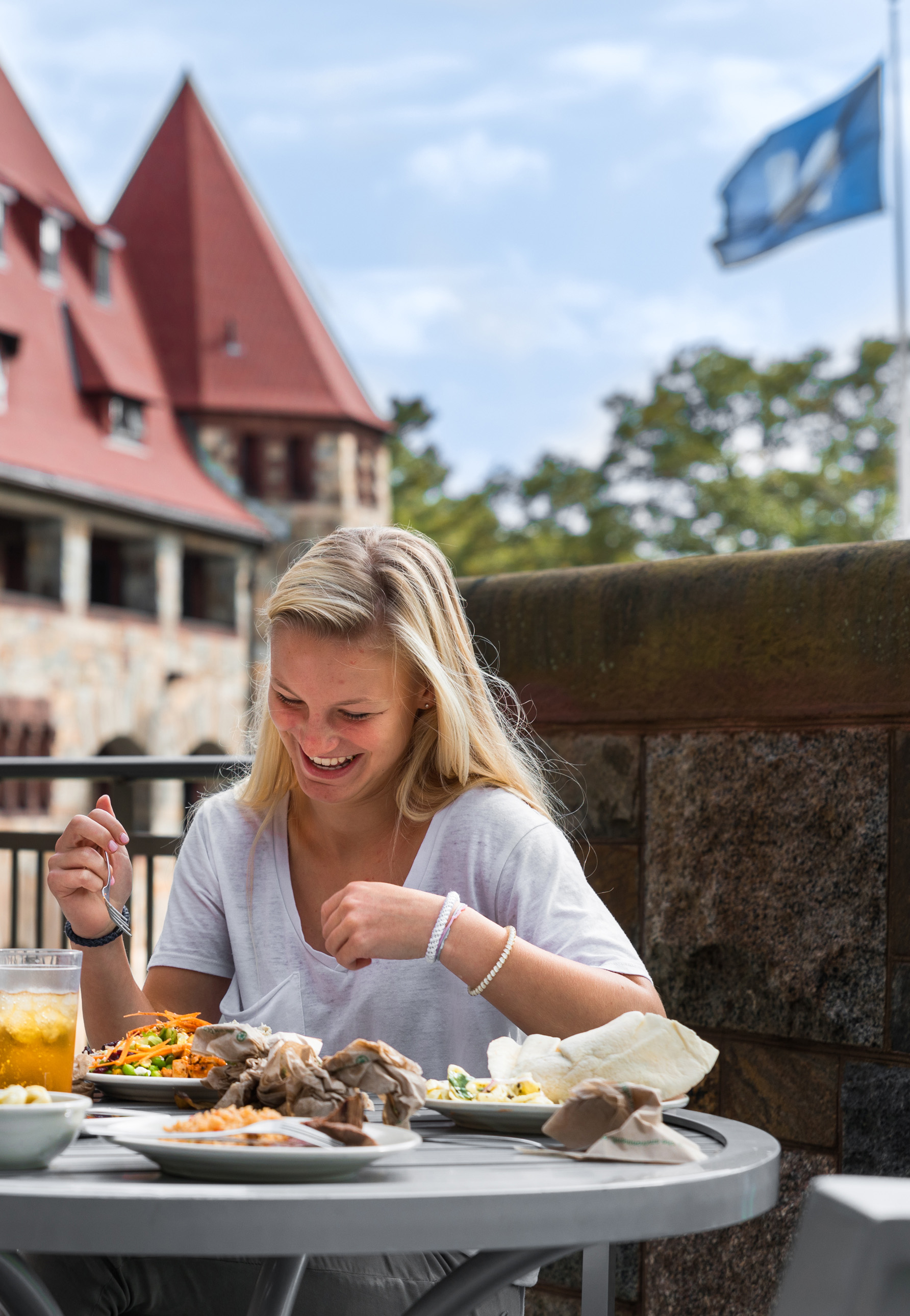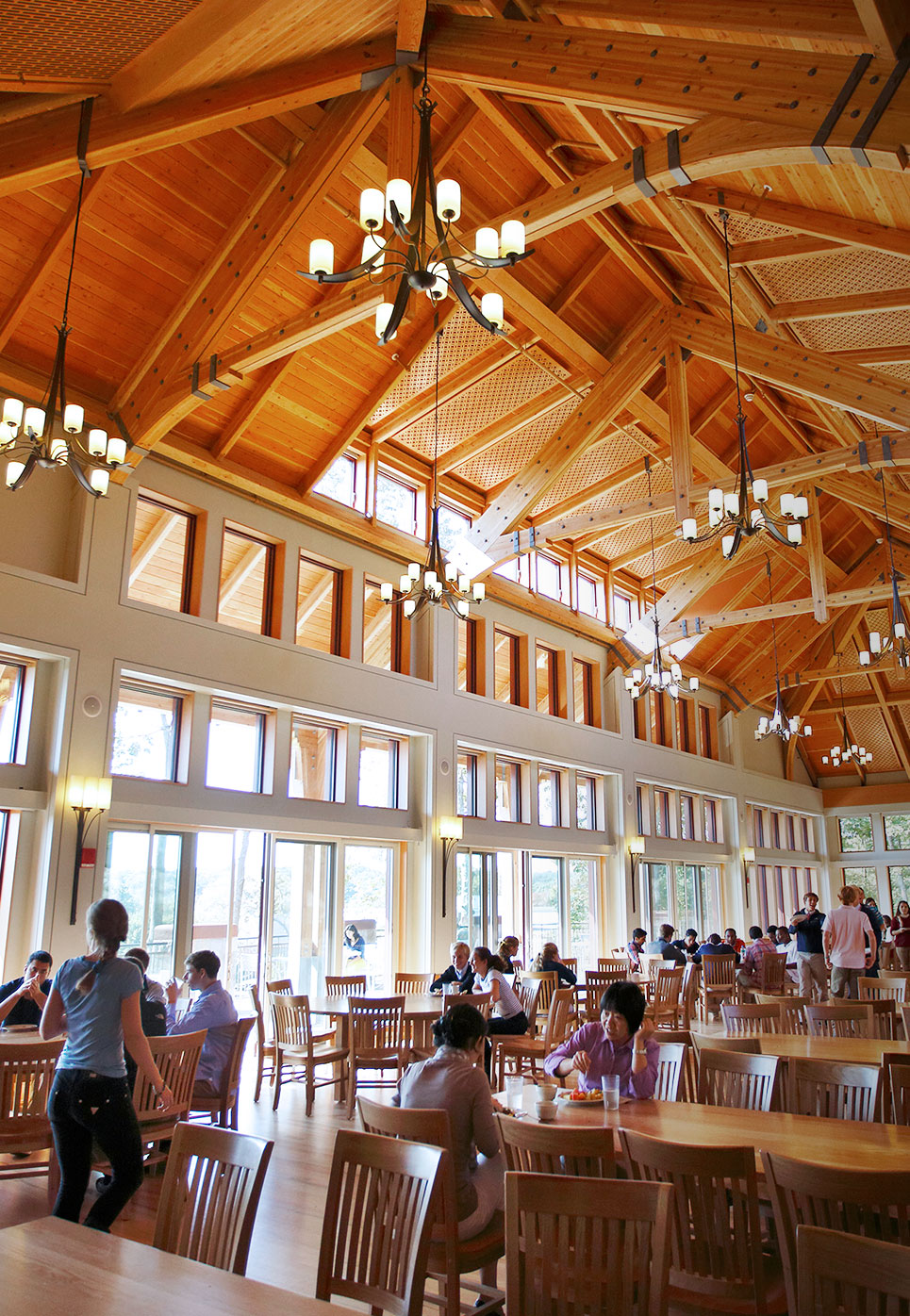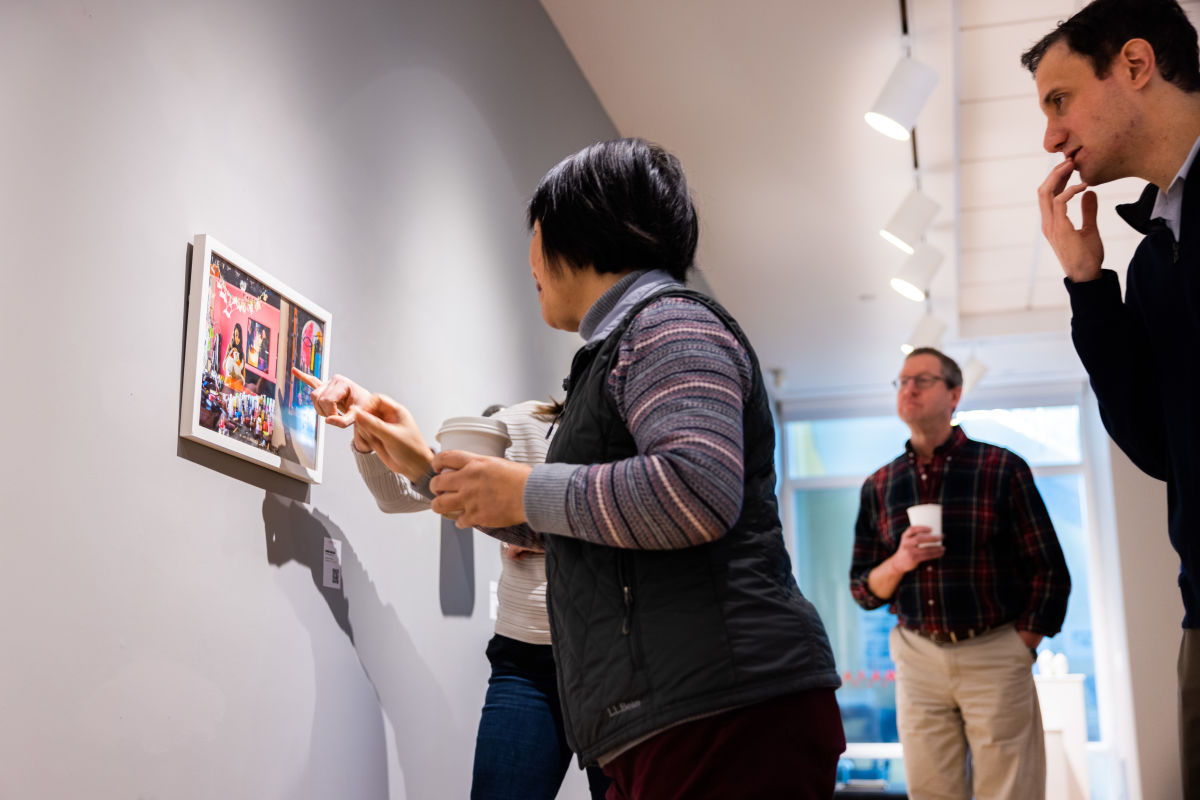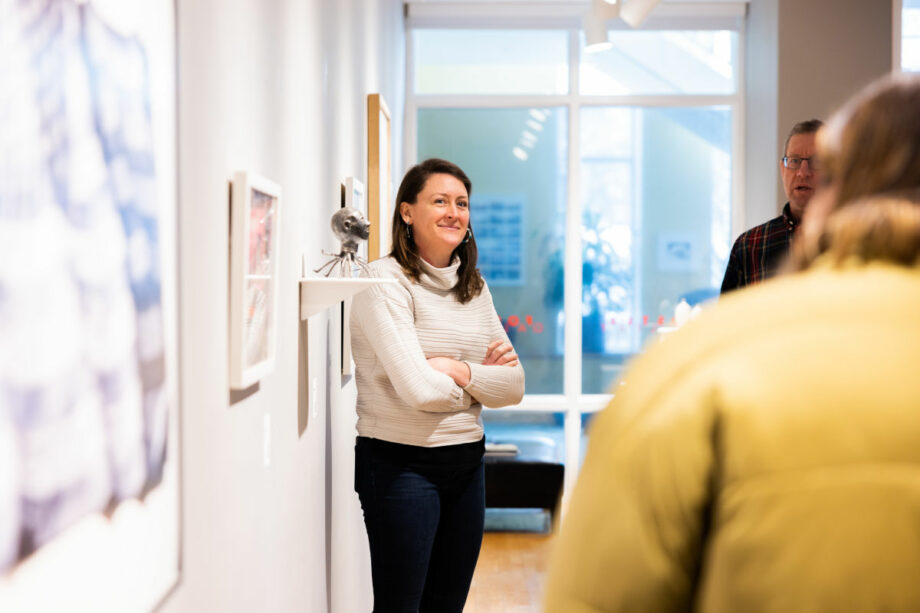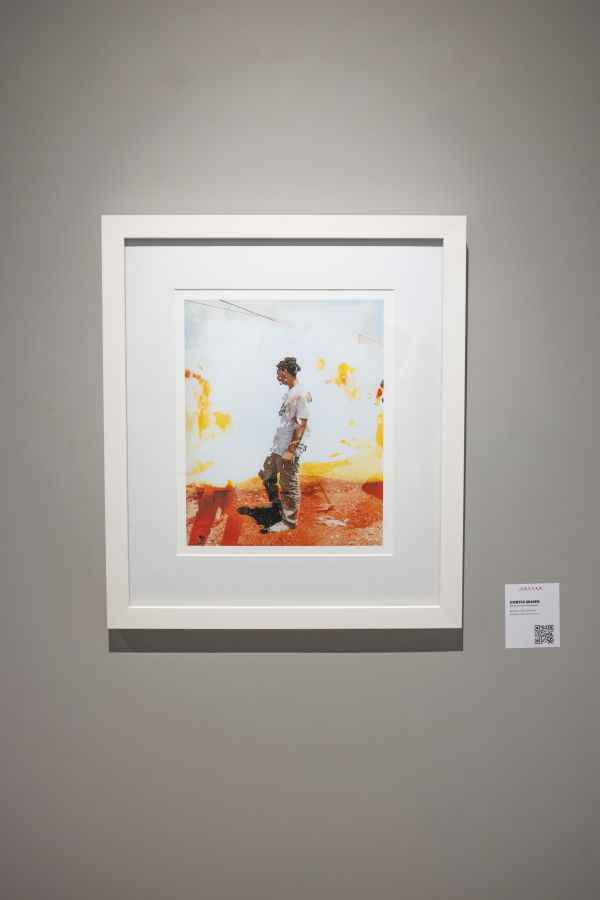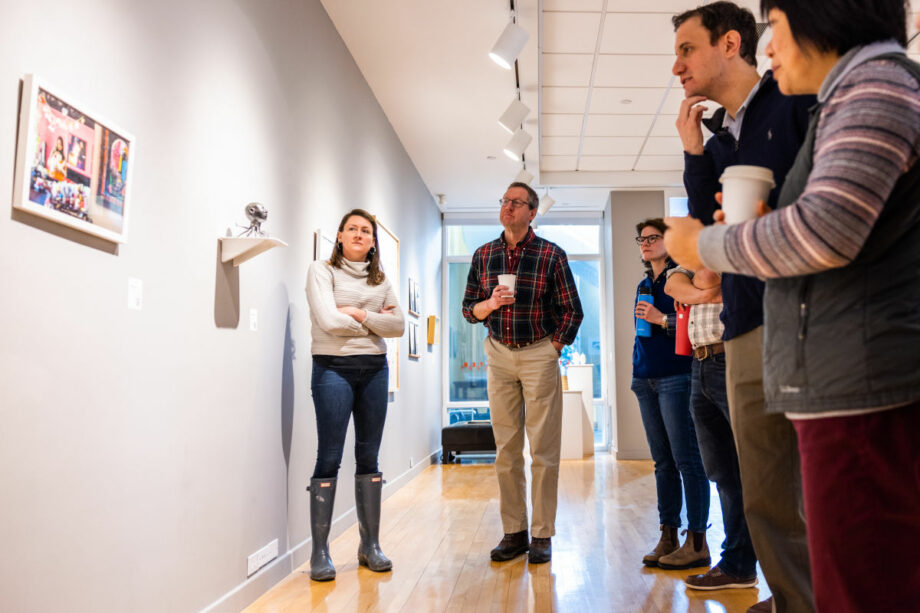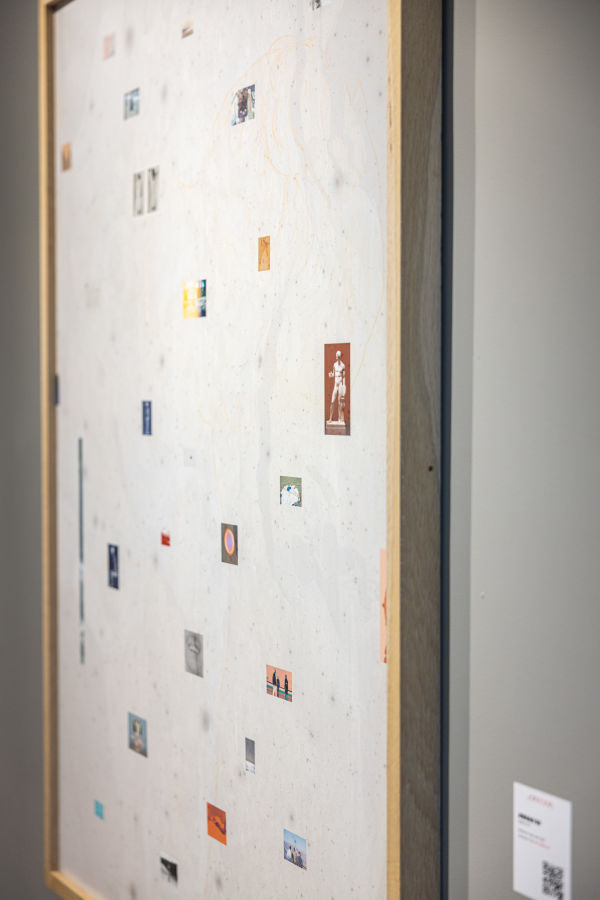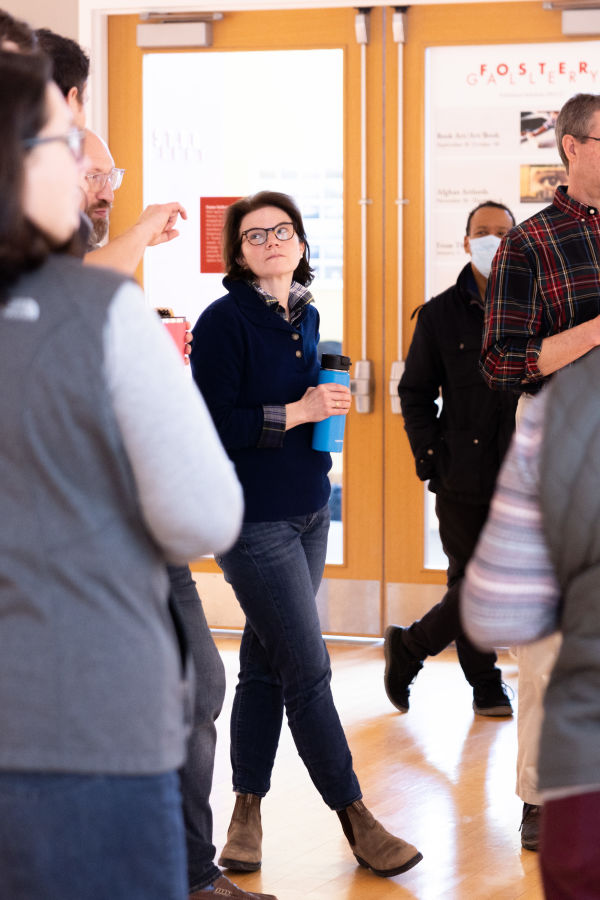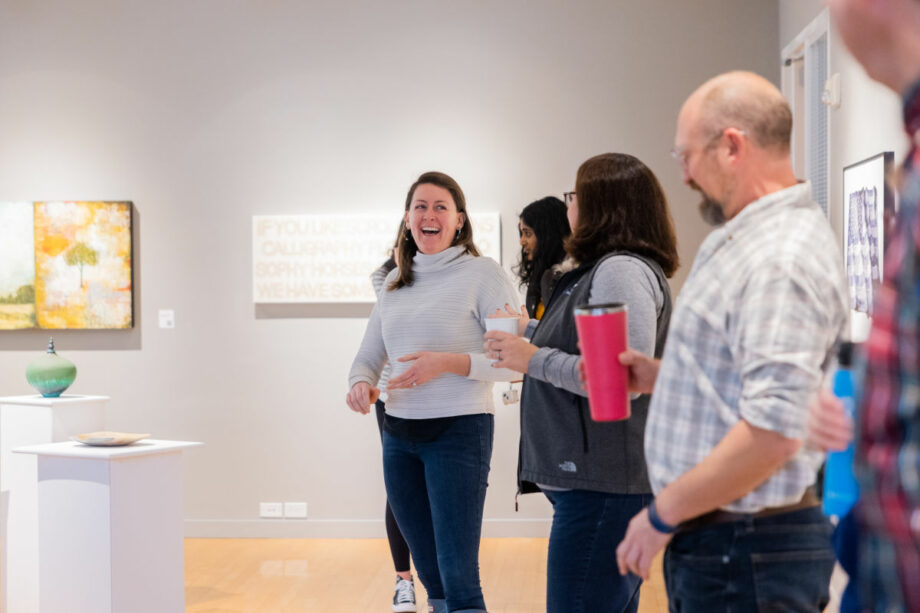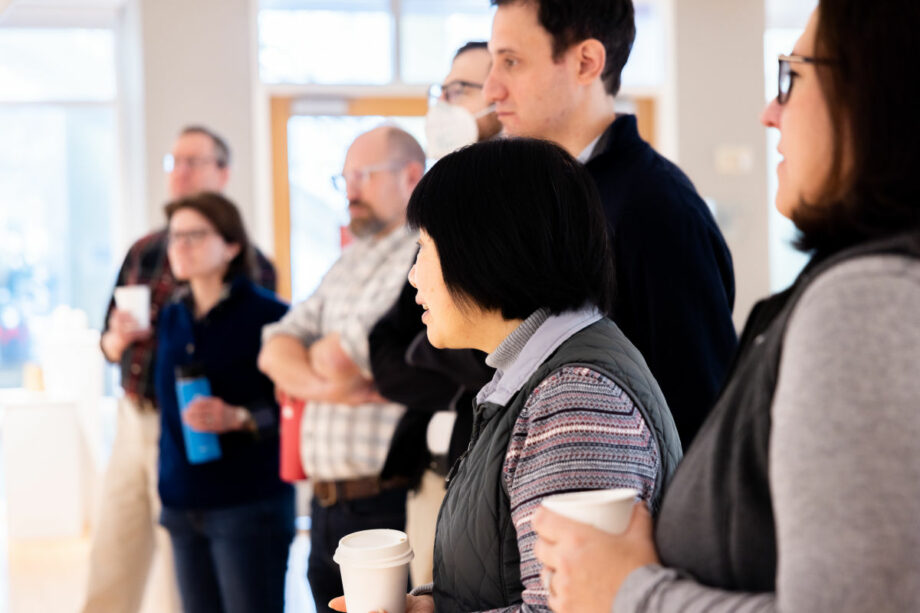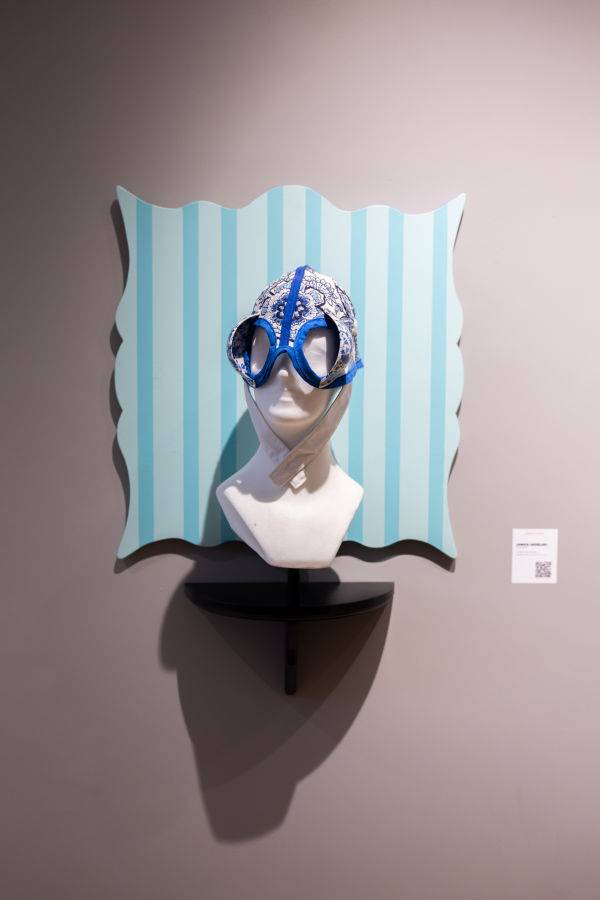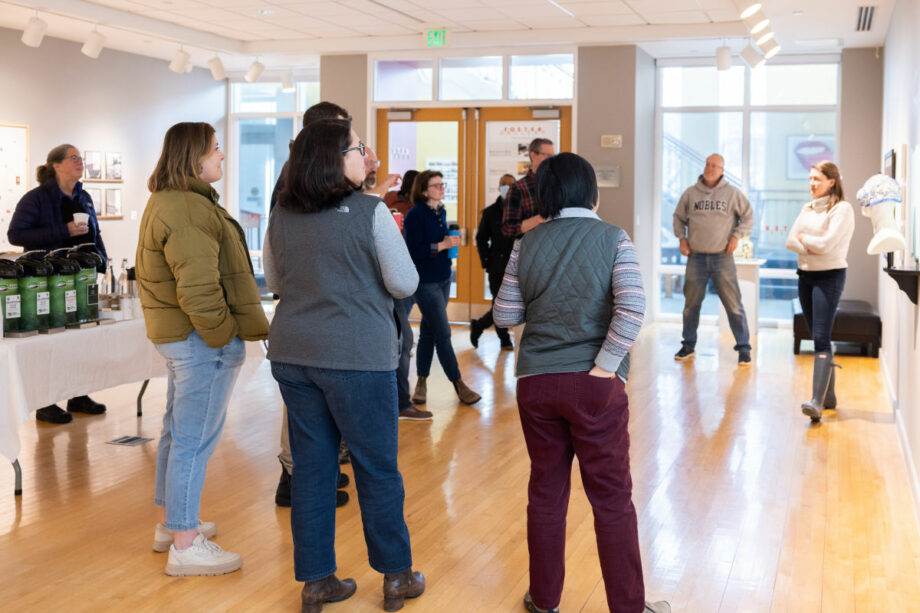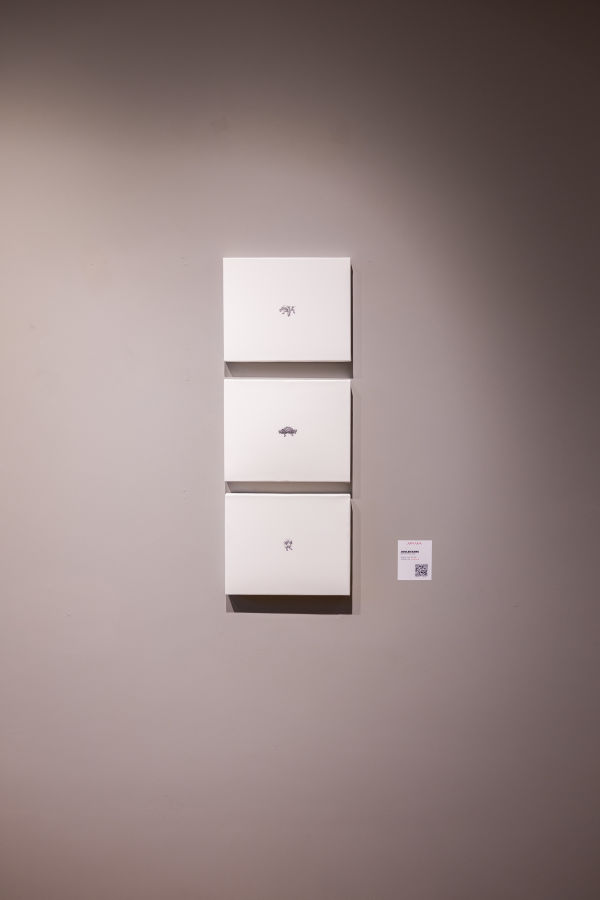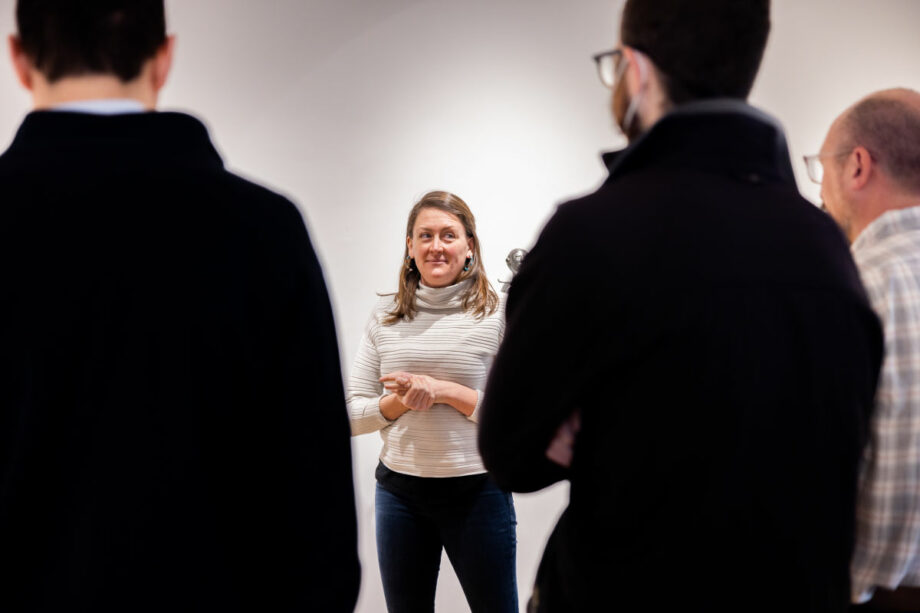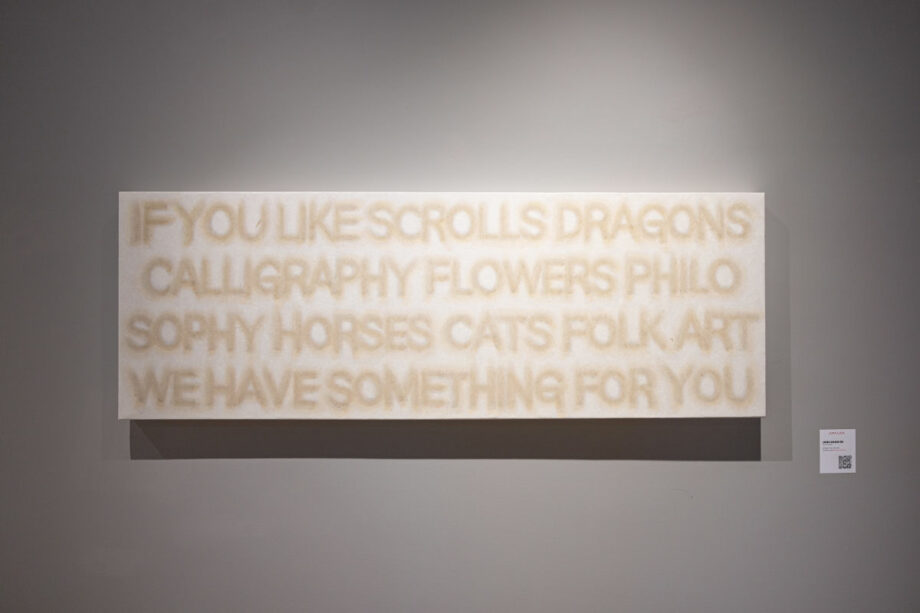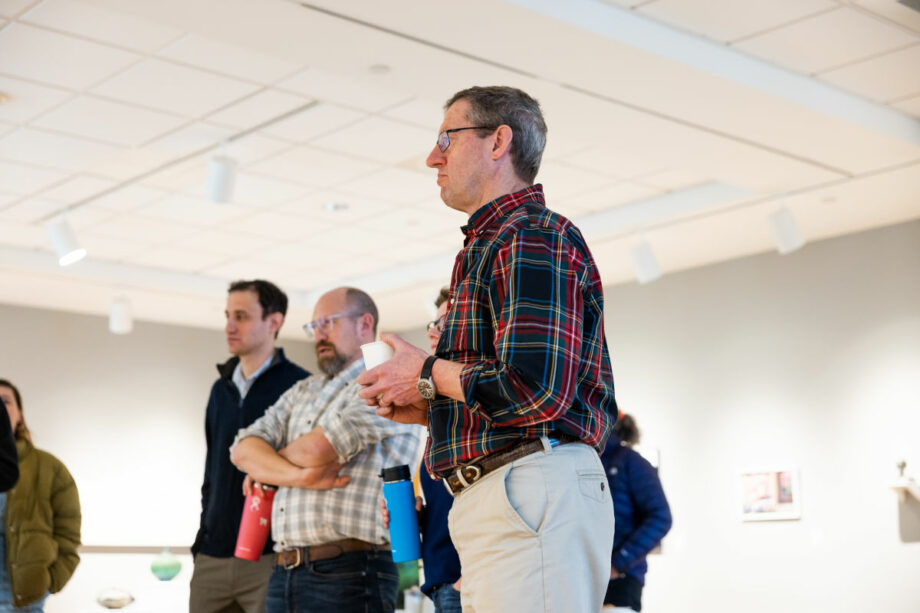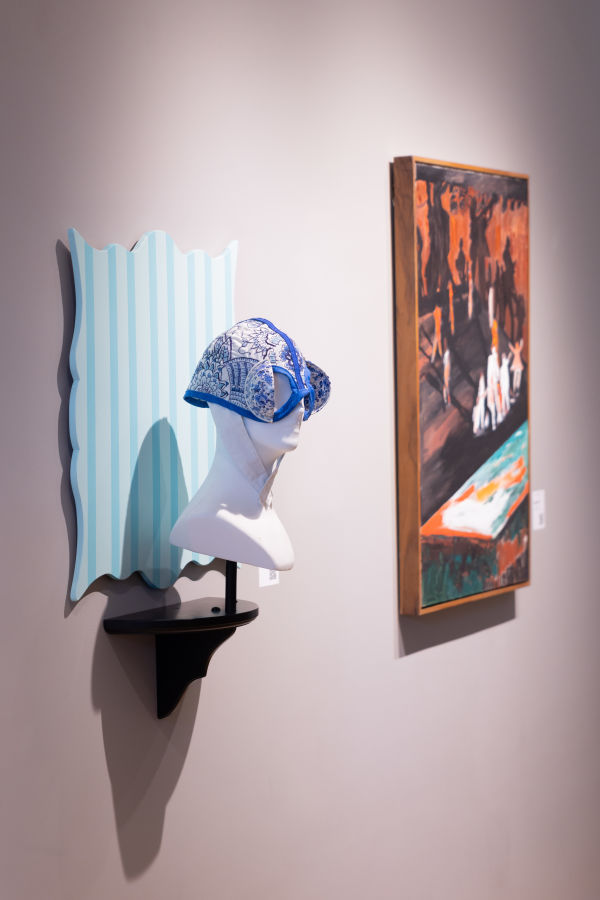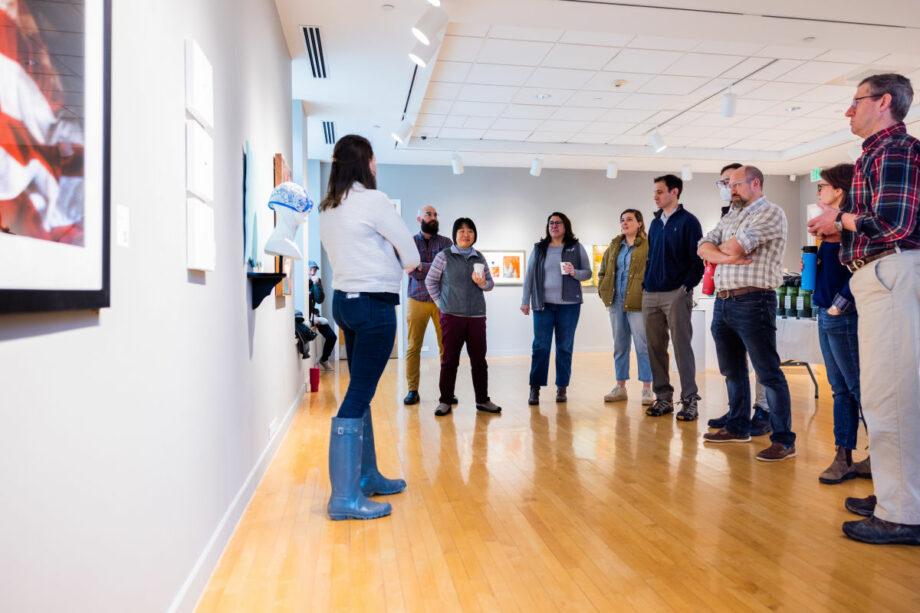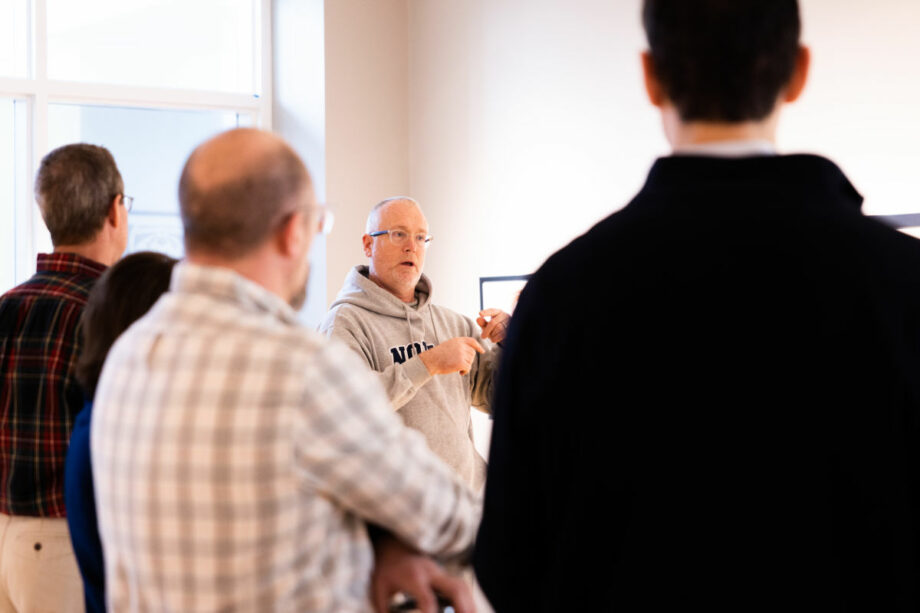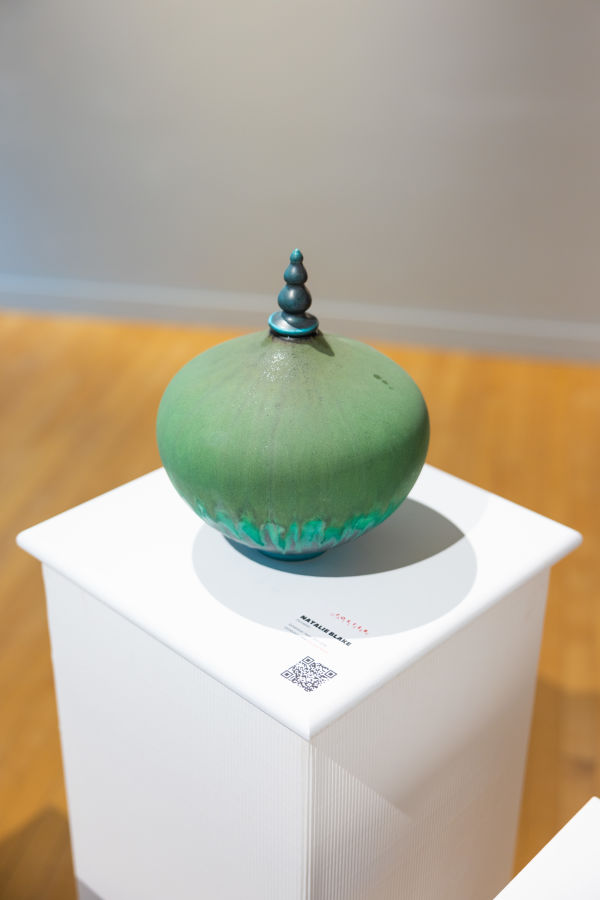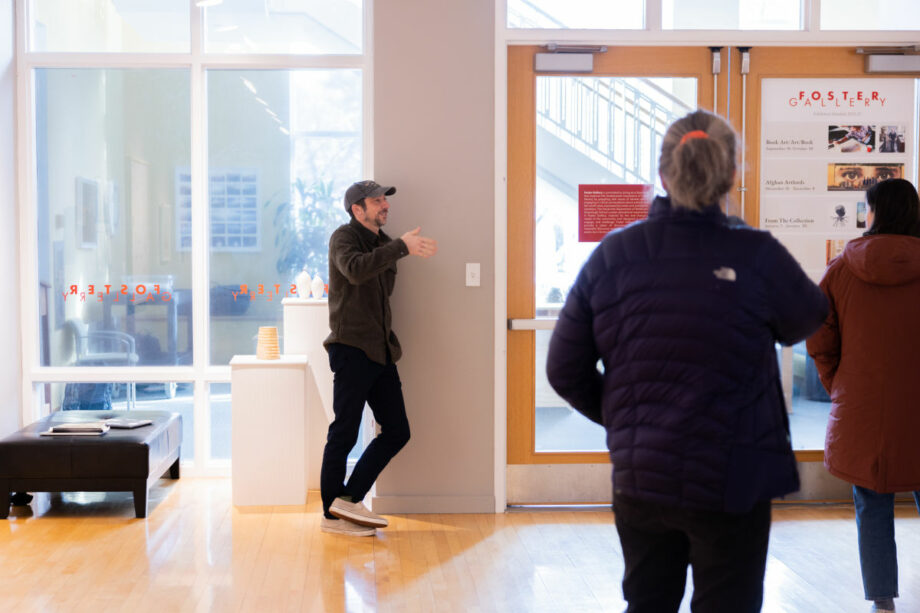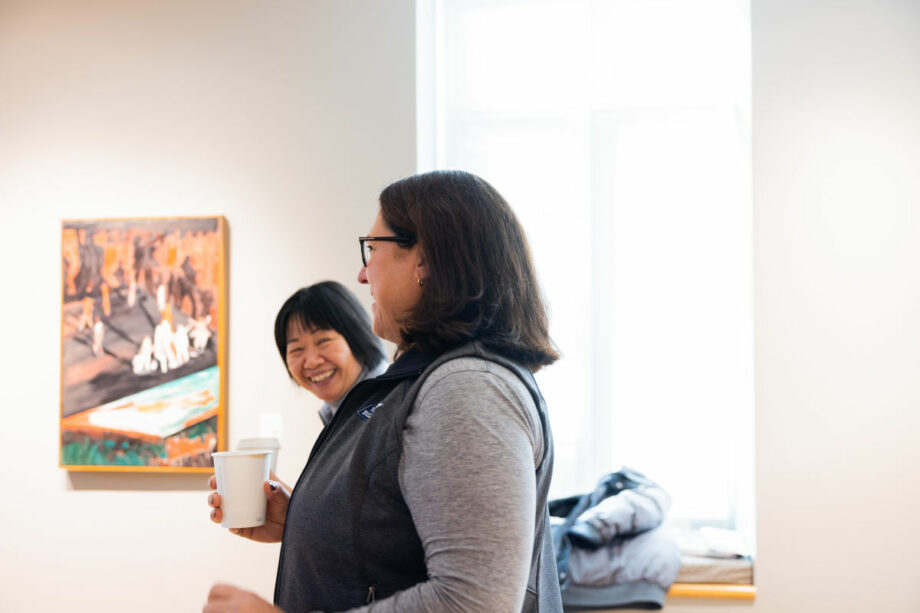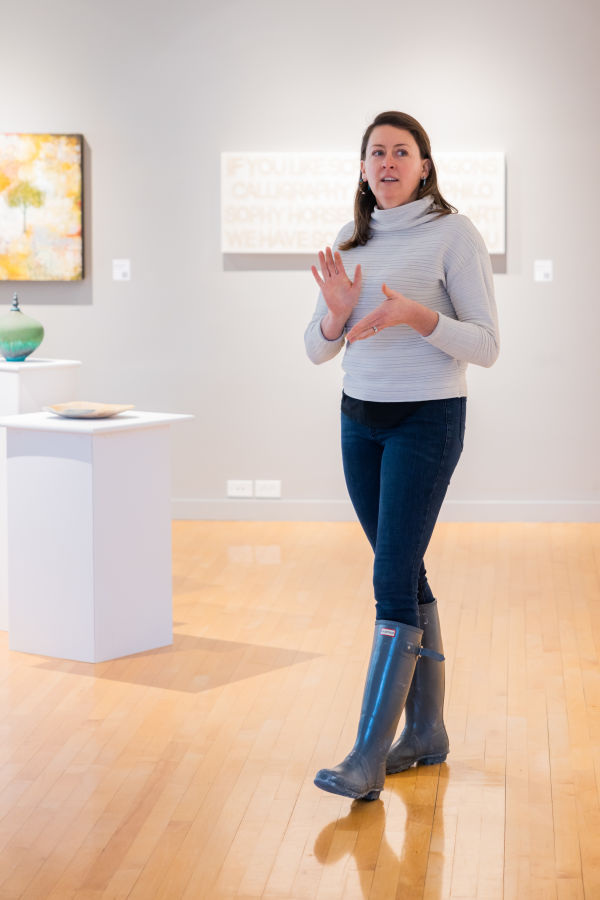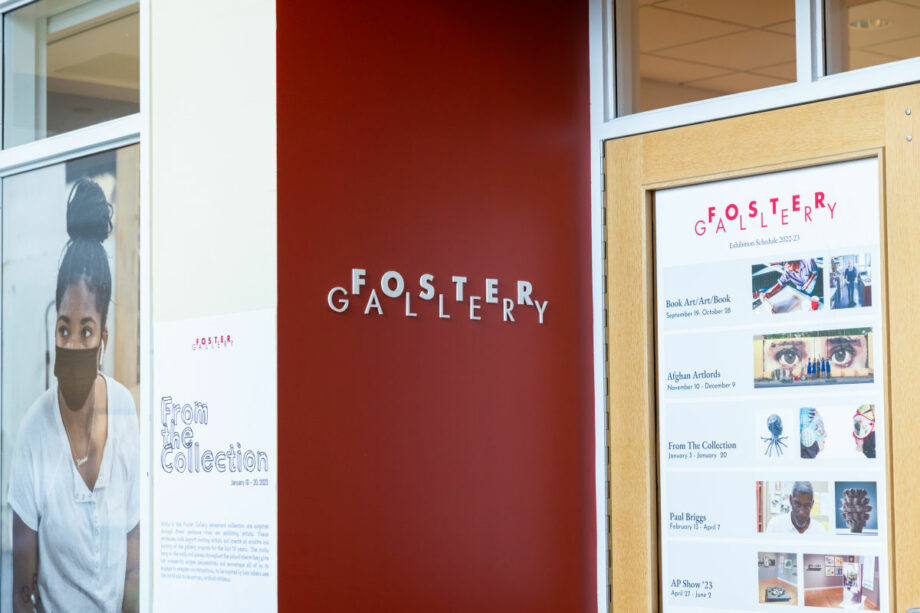The visual arts department invited faculty and staff to gather in Foster Gallery for coffee, snacks and an inspiring discussion about different methodologies for encouraging students to engage in conversation and analysis about works of art. In recent years Nobles has made it a priority to offer financial support to artists whose work has been shown in the gallery by purchasing their art for display around the school, and the current show displays a selection of this impressive work.
At the start of the gathering, Director of Foster Gallery and visual arts faculty member John Dorsey explained that the idea for the session had emerged from existing department pedagogy around talking about art, something that they felt the adults in the community, who can be just as easily intimidated as students in these discussions, might benefit from as well. “In addition to teaching the skills of the visual arts medium that we work in,” said Dorsey, “we also try to emphasize teaching our students visual thinking strategies.” About five years ago, the entire visual arts department attended what Dorsery described as an “enlightening” workshop at the Museum of Fine Arts in Boston, during which they explored ways to break down “the teaching of looking.” Dorsey explained that having done that work, his goal for his ceramics students is now “to not only work with clay, but also to be able to speak about clay and about their own work, and to be able to offer critique and support to their peers.”
For the greater part of the session, visual arts faculty member Nora Bourdeau walked faculty and staff through two different levels of a visual thinking strategy that she uses in her classes to break down a work of art, putting the adults on the spot and temporarily transforming them into her students. Bourdeau described the approach, which she calls “pizza,” as “a way for kids to step into looking at something,” explaining that it is especially helpful for students who might not be as comfortable discussing a piece of art in this way. During “pizza,” Bourdeau asks each member of the class to visualize a pizza and then share one thing that they see; everyone is required to participate, observations may not be repeated, and they are only allowed to describe visual observations. After completing the warm-up, faculty and staff repeated the same exercise with art hanging in the gallery. Bordeau explained that while the exercise is a simple one, the process forces students to slow down when looking at art and imagery, something she says is not done enough, as students are consuming images at a rapid pace in their daily lives. Bourdeau then walked through the Advanced Placement version of the exercise, which required a deeper level of questioning and thinking. Faculty and staff appreciated the opportunity to be the students in the room again, offering observations, laughing, and enjoying time with colleagues as they paused to focus on ways of seeing and talking about art with students.

